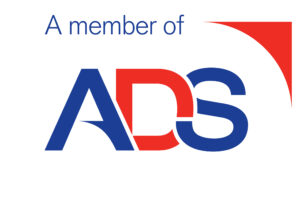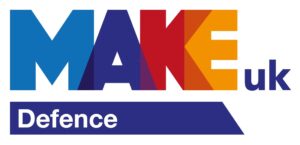DRC Legal System Overview
The DRC, a civil law country, traces its law to the 1804 Napoleonic Civil Code. The Congolese legal system is primarily based on Belgian law, influenced by Belgian colonial rule.
Customary law, prevalent in rural areas where 56% of the population lives, regulates personal status and property rights, particularly inheritance and land tenure, in traditional communities. Though subordinated to state laws, customary laws settle 75% of Congo disputes.
“Customary law” refers to a normative system enacted by legitimate law-making organs, not just usages and practices. It derives authority from these organs and exists independently of the individuals it regulates. Unlike state laws, ethnographic studies are necessary to ascertain customary rule content.
Unlike state laws, customary laws have limited application, only to the traditional communities they originate from.
Sources of Law
Congolese law is based on at least seven sources, including the Constitution, international treaties, legislation, regulations, custom, case law, and doctrines. The 2006 Constitution, the supreme legal document, forms the foundation of the Congo’s legal system. It establishes government institutions, defines powers, and protects fundamental rights. Drawing from Congolese, comparative, and international law, as well as French and Belgian laws, the Constitution incorporates experiences from Benin, Mauritius, Senegal, South Africa, and Togo.
International treaties and agreements, as confirmed by Article 215 of the Constitution, prevail over Congolese legislation upon publication in the government gazette. This monist legal system limits the application of international law to the Constitution and requires domesticating legislation for specific treaties. While rare, military courts have relied on Article 215 to apply international law in certain cases.
Legislation, distinguished between organic and ordinary laws, organizes key areas of national life and requires absolute majorities for passage and amendment. The Constitutional Court must declare organic bills consistent with the Constitution before they can be signed into law.
Administrative regulations, issued by the President and Prime Minister through ordinances, and by ministers and other officials, constitute the fourth source of law. Often considered the oldest, custom, or la coutume, consists of widely observed usages that have acquired the character of law over time. It differs from customary laws.
Case law and judicial precedents, as well as doctrinal writings and writings by legal scholars, are not binding sources of law, even if they carry persuasive authority.
Divisions of Law
The Congolese legal system is divided into three branches: public law, private law, and economic law.
Public law regulates legal relationships between the state and private persons, as well as between public bodies. It includes constitutional law, administrative law, tax law, criminal law, and judicial organization.
Private law applies to relationships among citizens or private groups. It includes civil law, which covers obligations, persons, family law, property law, and succession law. Private law also includes business organizations, private international law, and certain commercial law areas.
Latest Developments
The DRC’s government has modernised public administration, administrative law, and macroeconomic stability. The country’s rapid GDP growth was driven by mining, infrastructure construction, and agriculture. After liberalizing energy and insurance sectors, the Parliament enacted agricultural principles legislation in 2011. To enhance competitiveness, the government introduced a value-added tax, the 1958 New York Convention, the OHADA Treaty, and a one-stop shop for businesses and external trade. Though signing the AfCFTA Agreement in 2018, the DRC hasn’t ratified it.
The judiciary reorganizes to meet constitutional requirements. The Constitution divides the judiciary into three specialized court systems: constitutional, ordinary, and administrative. Each system has a supreme court: the Constitutional Court, the Court of Cassation, and the Council of State. The government installed these courts between 2013 and 2018.
Despite significant policies and legal reforms, infrastructure, weak institutional capacity, resource limitations, and corruption undermine the legal system’s effectiveness, stability, and predictability.
Constitutional Law
The 18th February 2006 Congolese Constitution, the fundamental organic law of the DRC, marked the beginning of the Third Republic. Prior to its promulgation, the DRC had enacted various constitutions and laws, some tailored to the government, others neglected, and some ignored by enforcement officials. The Senate, National Assembly, Congolese people, and President approved the Constitution through a referendum in December 2005, which was then promulgated in 2006. To safeguard democratic principles, the Constitution entrenches certain provisions, such as the republican form of state, representative government, universal suffrage, presidential term limits, judicial independence, political pluralism, and freedom of association. These provisions are protected by an amendment procedure requiring either a national referendum or a super-majority vote in both houses of parliament.
The National Police
The Congolese national police, the Police Nationale Congolaise (PNC), is tasked with public safety, security, law and order, and the protection of senior government officials. The Constitution mandates apolitical policing, and the police serve the nation without personal gain. Under local civilian authority and responsible to the home affairs minister, the PNC faces challenges prompting complaints from the population. In response, Parliament reformed the police in 2011 to create a civilian, efficient, unified, apolitical, and professional force capable of fulfilling its mission regardless of political context. The law unified the administrative and judicial police, allowing recruitment from revamped police schools. Notably, gender considerations are explicitly incorporated into police activities.
The Police Council, the top structure under the 2011 law, comprises the home affairs minister, justice minister, head of the General Office, his three deputies, head of the General Audit Office, provincial police chiefs, and the Director of Training and Police Schools. Below the Police Council are the General Office, General Audit Office, provincial offices, and local and territorial units. Dieudonné Bahigwa Amuli, the head of the General Office, leads the national police.
The Army
The Congolese army, the Forces Armées de la République Démocratique du Congo (FARDC), has the constitutional mission to defend the integrity of the national territory and borders. The army is comprised of the land force, air force, naval force and auxiliary services. Within parameters set out by legislation, the Congolese army participates, in peace as in war, in the economic, social and cultural development of the nation and in the protection of persons and their property. Like the national police, the Congolese army is republican, apolitical, in the service of the nation, and subject to civilian authority. Nobody can use the Congolese army for his or her own purposes; and it is high treason to form military or para-military organizations, private militias or armed youths.
The New Law
In 2013, the Congolese government enacted a law to restructure the army. The law, based on the country’s history and geopolitical importance, overhauled the FARDC to create a national, apolitical, and republican army. However, some provisions from the 2004 organic law remain in force, such as organization, mission, and guiding principles.
The new army law distinguishes between political institutions (President, government, National Assembly, Senate, and Defense Council) and the military structure (High Command). The Defense Council is both a political and military institution, responsible for appointing military officers, managing national defense, declaring war, and implementing government policies.
Current Conflict
The mineral-rich east of the Democratic Republic of Congo has been plagued by conflict for over 30 years, since the 1994 Rwandan genocide. Armed groups have competed with the central authorities for power and control of the nation’s vast fortune.
The instability has devastated neighbouring countries, notably in the 1990s when two massive conflicts, dubbed Africa’s World Wars, resulted in millions of deaths.
What is happening in Goma?
Fighters from the M23 rebel group have entered Goma, a major city in eastern DR Congo.
Sitting on the border with Rwanda and Lake Kivu, Goma is a vital trading and transport hub. It’s within reach of mining towns supplying high-demand metals like gold, tin, and coltan, a key component of mobile phones and electric vehicle batteries.
The rebels claim control, but the Congolese government says its troops still hold key locations. UN aid agencies warn of a major humanitarian crisis, with overwhelmed hospitals and bodies on the streets.
Who are the M23?
The M23 are led by ethnic Tutsis, who say they needed to take up arms to protect the rights of the minority group.
They say that several previous deals to end the fighting have not been respected – they take their name from a peace agreement that was signed on 23 March 2009.
Shortly after its creation in 2012, the M23 rapidly gained territory and seized Goma – acts that were met with international opprobrium and accusations of war crimes and human rights violations.
It was forced to withdraw from Goma, and then suffered a series of heavy defeats at the hands of the Congolese army along with a UN force that saw it expelled from the country.
M23 fighters then agreed to be integrated into the army in return for promises that Tutsis would be protected. But, in 2021, the group took up arms again, saying the promises had been broken.
Is Rwanda involved in the fighting?
Neighbouring Rwanda has in the past consistently denied that it supported the M23, but ever since 2012 UN experts have accused it of providing weapons, logistical support and even ultimately commanding the rebels.
DR Congo’s government, as well as the US and France, have also identified Rwanda as backing the group. Last year, a UN experts report said that up to 4,000 Rwandan troops were fighting alongside the M23. In a statement on Sunday, Rwanda did not explicitly deny that it backed the M23 but instead said that the fighting near its border was a “serious threat” to its “security and territorial integrity”.
It added that Rwanda was being scapegoated and blamed the recent fighting on the Congolese authorities, saying they had refused to enter into a dialogue with the M23.
A peace process, mediated by Angola and involving Rwanda and DR Congo, did result in a ceasefire deal last year, however that soon fell apart and fighting resumed.
What is the connection with Rwanda?
The origin of the current fighting can partly be traced back to the genocide in Rwanda in 1994. About 800,000 people – the vast majority from the Tutsi community – were slaughtered by ethnic Hutu extremists. The genocide ended with the advance of a force of Tutsi-led rebels commanded by Paul Kagame, who is now president.
Fearing reprisals, an estimated one million Hutus then fled across the border to what is now DR Congo. This stoked ethnic tensions as a marginalised Tutsi group in the east – the Banyamulenge – felt increasingly under threat. Rwanda’s army twice invaded DR Congo, saying it was going after some of those responsible for the genocide, and worked with members of the Banyamulenge and other armed groups.
After 30 years of conflict, one of the Hutu groups, the Democratic Forces for the Liberation of Rwanda (FDLR), which includes some of those responsible for the Rwandan genocide, is still active in eastern DR Congo. Rwanda describes the FDLR as a “genocidal militia” and says its continued existence in the DR Congo’s east threatens its own territory. It accuses the Congolese authorities of working with the FDLR – accusations which DR Congo denies. Rwanda is unlikely to stay out of DR Congo unless it is satisfied that the FDLR is no longer a threat to itself, or to the Tutsi communities in eastern DR Congo.
What about Congo’s mineral wealth?
DR Congo and multiple UN reports have accused Rwanda of using the conflict as a way of looting Congolese minerals, such as gold and coltan, which is used to make batteries for electric vehicles and mobile phones. In recent years, the M23 has seized several lucrative mining areas and a report by UN experts last December said that around 120 tonnes of coltan was being sent by the M23 to Rwanda every four weeks. Rwanda has consistently denied allegations of exploiting DR Congo’s minerals.
What are the UN peacekeepers doing?
A UN peacekeeping mission has been in place since 1999. The current force – known as Monusco – is made up of more than 10,000 troops. However, of these, only the Force Intervention Brigade is allowed to carry out offensive operations against armed groups. It was this force that helped defeat the M23 in 2013. Monusco has been the target of anger from ordinary Congolese who see it as failing to do its job. President Félix Tshisekedi, deeming the mission a failure, had asked it to leave by the end of last year.
But the departure was delayed and in December the mission was extended for another year. The Southern African Development Community (Sadc), a regional grouping of 16 countries, has also deployed a military force to eastern DR Congo, but it has been unable to halt the rebels.
Need advice? If you’d like further information, or to discuss working with us, you can get in touch via our Contact Us page
Drop us a message
To learn more about our legal services kindly reach out by completing the form on the right.
Alternatively, you can contact our office at +44 (0) 20 3875 7422 or leave us a message.
Our team of experts is looking forward to assisting you with your legal needs.






